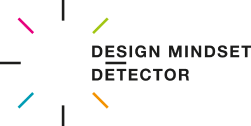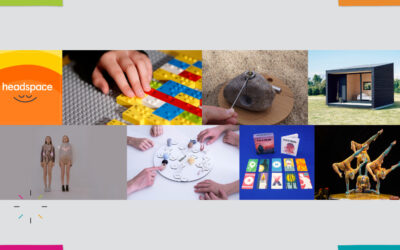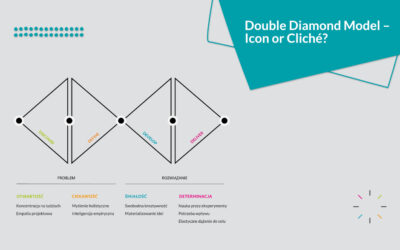Contents
- How designers think and act? The 1979 experiment
- Research on Design Mindset
- Key Predispositions of Design Mindset
How designers think and act? The 1979 experiment
In 1979, an interesting experiment was conducted to understand how designers think and act. Two groups of students – architects (representing the design mind) and mathematicians (representing the analytical mind) – were given the task of arranging colored blocks according to specific requirements.
Analysts adopted a strategy of systematically exploring possible combinations, while designers generated multiple proposals, gradually modifying and eliminating them until they found the solution that best met the requirements.
Conclusion of this experiment: There are analytical minds, representing a “problem-focused” approach, and design minds, which are “solution-focused.”
See also: Design Mindset and Gender Values in Business
Research on Design Mindset
Our research on the “design mindset” lasted several months. During this time, we analyzed various materials to understand what makes it easier for some to work in innovative, interdisciplinary teams, while others find it more challenging, and how this connects to design. Ultimately, we identified key predispositions that make up the so-called design mindset.
Check out our post: Career Predispositions for Working as a Designer
Key Predispositions of Design Mindset
Openness to people, their needs, and collaboration with them
This group of attitudes is characterized by sensitivity to other people, a desire to be with them, understand them, and see the value that arises from the collaboration of different people and perspectives. This group includes two predispositions: people focus and design empathy.
Curiosity about everything new, associated with natural enthusiasm for action
This group of attitudes allows, among other things, to capture a broad perspective of challenges, manifesting itself in inquisitiveness and readiness to quickly move to action. This group includes two more predispositions: holistic thinking and empirical intelligence.
Boldness in taking initiatives and creating new solutions
This group of attitudes combines, among others, the pursuit of seeking what is new and unusual, building value despite incomplete information, and striving to concretize concepts. This group includes two more predispositions: free creativity and materializing ideas.
Determination in pursuing goals, even if it means taking risks
Among the characteristic attitudes of this group are a liking for experimenting and learning through action, as well as perseverance and creativity in overcoming difficulties. Identified predispositions include: appetite for learning, need for impact, and flexible goal pursuit.
These nine predispositions are a real asset for companies striving for innovation today. Interestingly, the “design mindset” can be found not only in professional designers but also in many people who have nothing to do with design professionally.
It is worth noting that people with a design mind often have a passion for music and play instruments. This diversity of interests allows for greater creativity and openness to new ideas and solutions.
In summary, the Design Mindset is a way of thinking characterized by openness to people, curiosity, bold initiative-taking, and determination in achieving goals. These predispositions are crucial for people working in design, but also valuable for other professions, especially in innovative and interdisciplinary environments.
Read also: UI/UX designer – who are they and how to become one?





